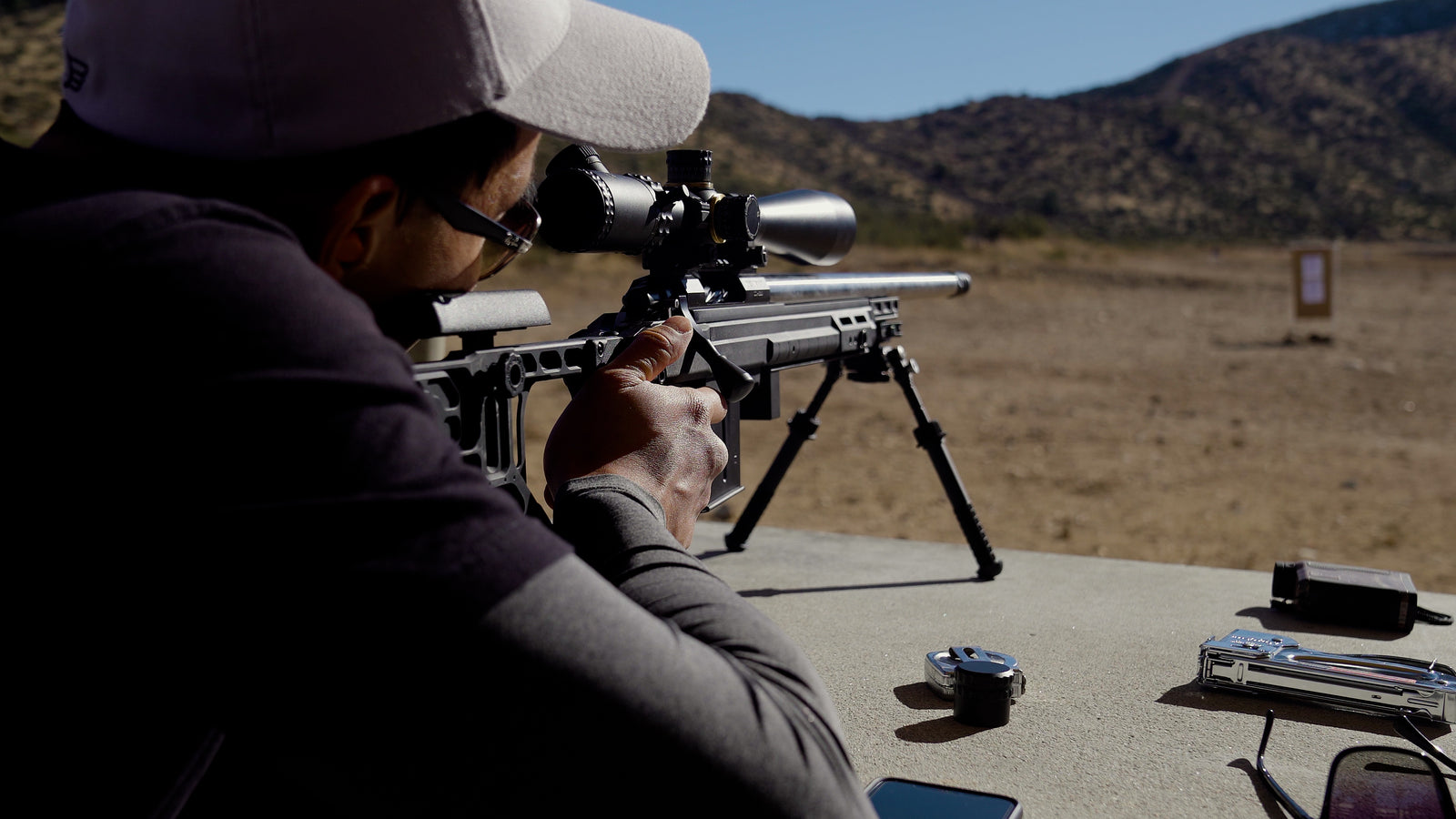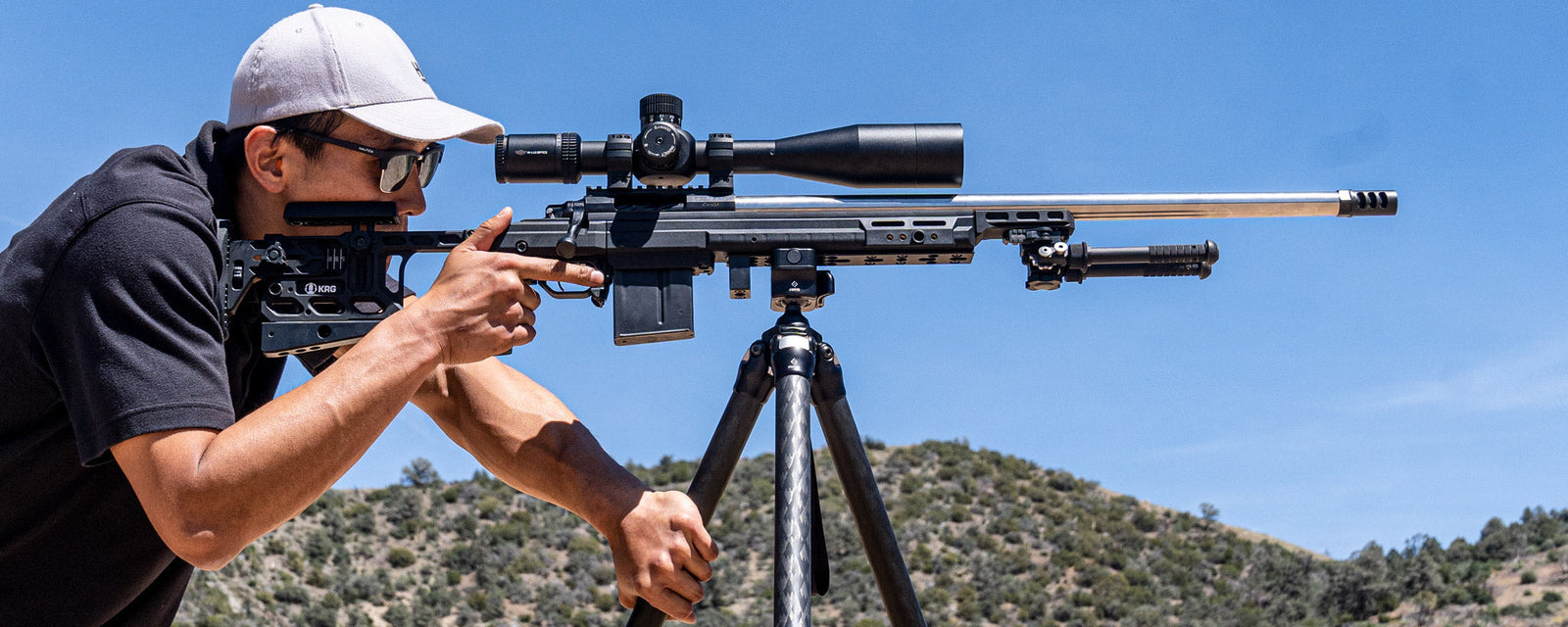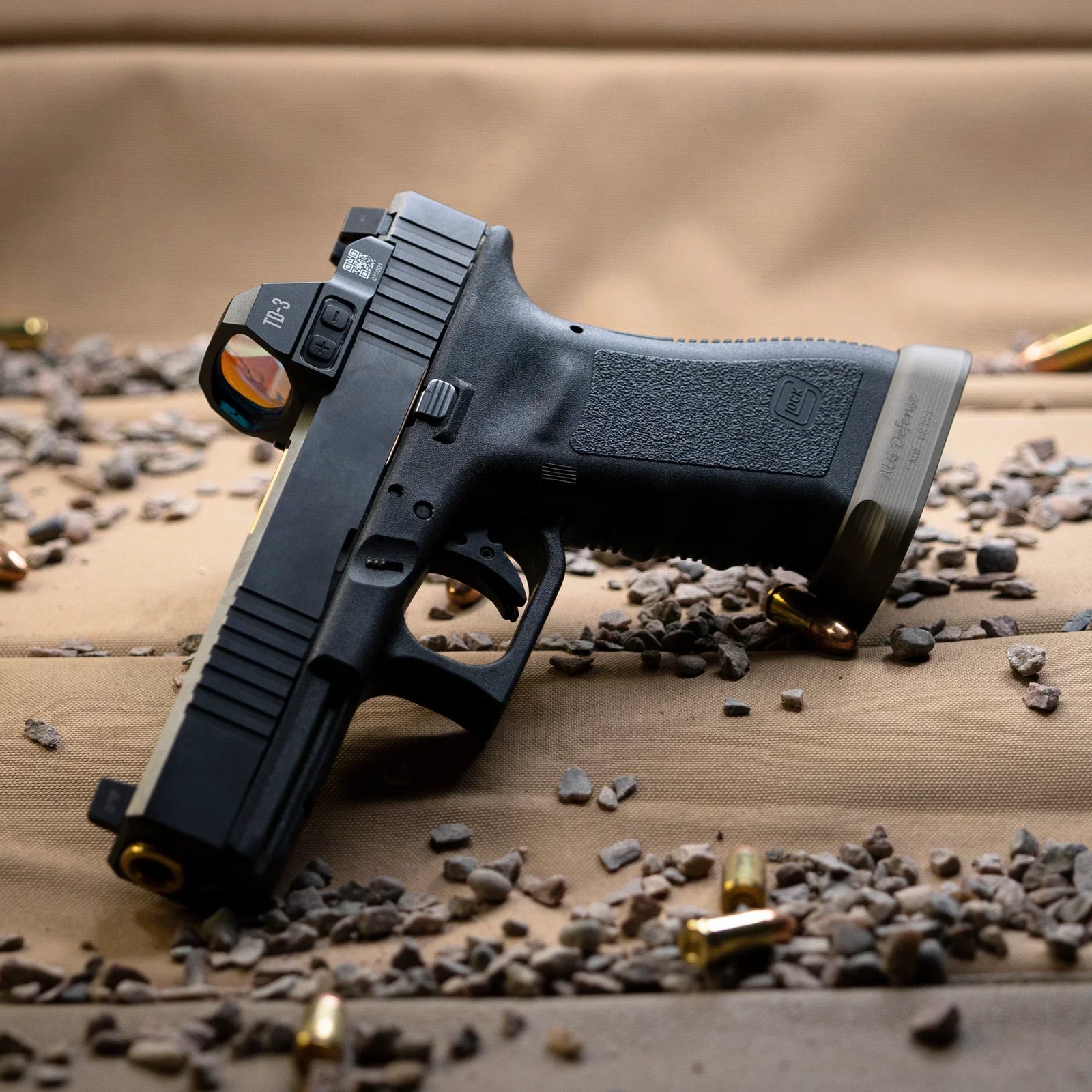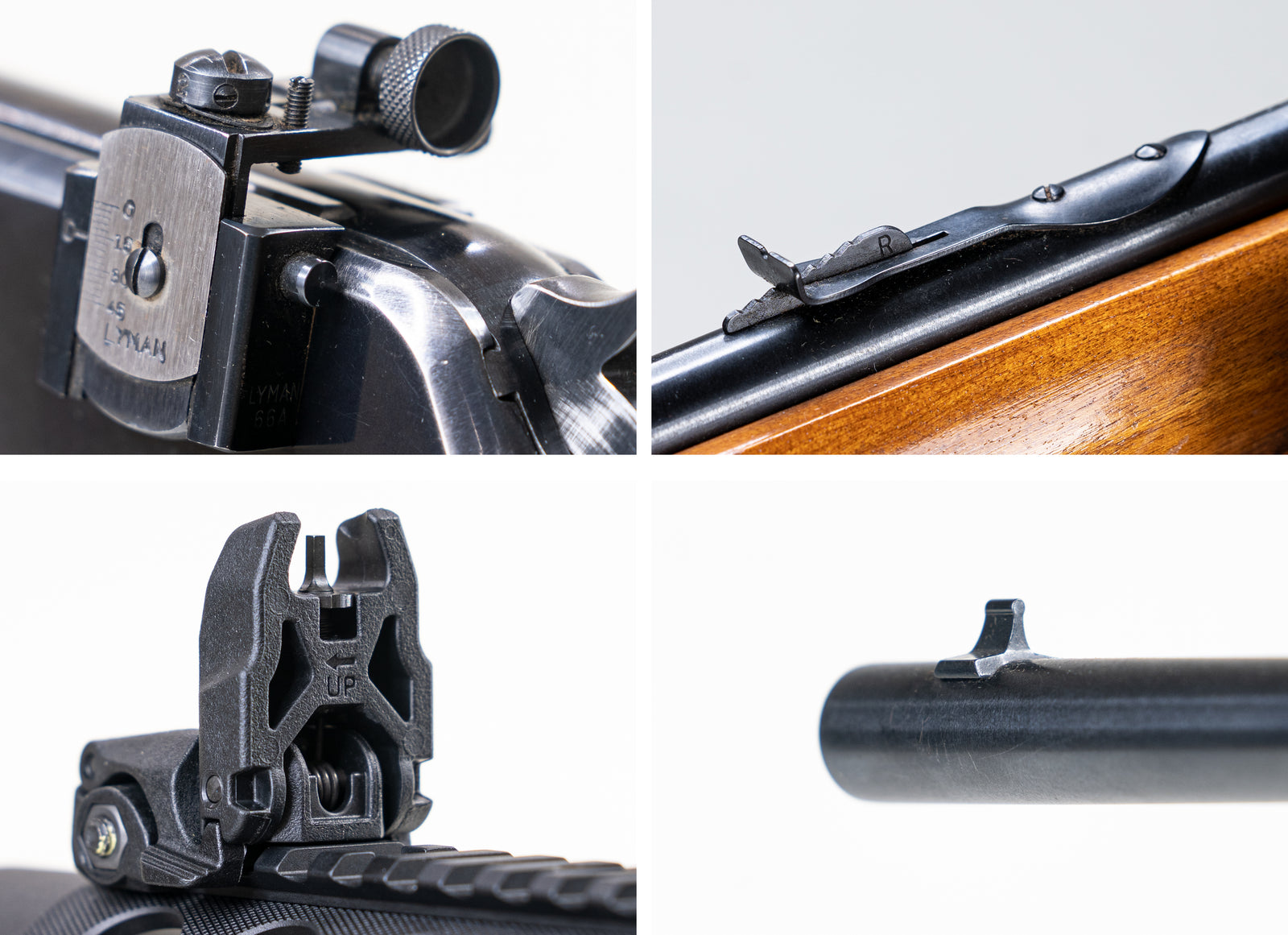Or, How to Zero When There Isn't Enough Room
Let’s talk zeroing: for when you can’t reach the distance you want.
Intro
Right now, 83% of the population lives in cities. While this has increased the convenience with which we can get shooting supplies from the store to our home, it hasn’t made finding a place to shoot any easier. Actually, for most of the population (please see the above statistic), it means there often aren’t shooting ranges that allow you to really reach out. Indoor ranges are often limited to 25 yards. Some outdoor pistol and smallbore ranges might have a maximum distance of 100 yards.
Sometimes, it’s great to drive all the way out to somewhere wide open - the desert, a powerline road - and take some truly long shots. Getting your rifle set up for those shots can take a bit of time. We can speed that process along, all while verifying the bullet is travelling on roughly the right path.
Your range might have a time limit or a check-in line (firearm purchases are up 80%, and someone is buying all that ammo…). You might want to use the in-city shorter ranges to start setting up your zero, before you drive all the way out to the longer range to get set for a further distance. Or, as we’ve often found, sometimes it’s just so much easier to get zeroed a little closer before you take it out to 100 yards or more.
To find out the easy way to zero - the 25 Yard Zero - we’re going to have to take a look at some numbers. And some pictures.
And then shoot some rounds, of course.
The Reasoning
If you hold your rifle perfectly level with the target and take a shot, the bullet will move forward very fast and fall down at the speed of gravity (plus or minus some atmospheric effects). Before too long, the bullet will hit the ground. The exact distance before this happens will depend on your size of bullet, how aerodynamic it is, and how fast it’s going.
Generally, for long-range shooting, you’re going to need to angle the rifle upward.
If you’ve got a scope on your rifle, it’s going to make seeing the impact easier - provided the scope is also pointed in the right place.
To start, I recommend bore-sighting your rifle if it’s possible. It’s not possible for all rifles, but the rifles that can take advantage of this process probably should. (To find out how easy it is to boresight, please check out the accompanying article). Once you’re on paper, and the bullets are hitting reasonably near to where you put your crosshairs, it’s time to put the bullet on the right path.
A brief note - A zero is a point where the optic and the bullet’s trajectory line up. Ideally, you’ll know the distance to your target and be able to adjust your scope so the crosshairs line up with exactly where your bullet will land. If the target is at a different distance for another shot, you’ll have to dial that scope to line it up with where the bullet will be at the other distance. You may change your zero many times throughout the course of a day. Don’t be afraid of dialing if you trust your scope. They’re built for it.
The zero we’re going for in the end - the 100 yard zero (or whichever distance you’re going for) - is called the
2nd Zero. That’s because it’s actually the
second spot where the trajectory of the bullet crosses the line of the optic.
The first zero is generally fairly close to the firing line. When you hold your rifle to shoot at 100 yards or farther, you’ll actually be angling the line of bore
up. This puts the bullet on an arc: up and forward, apex, then gradually reducing speed as gravity pulls it down, then the impact with the target. The start of that arc - the upward part - often has the bullet passing above the optical path.
If the bullet continues past the target, where the 2nd Zero lies, it will continue to move down below the line of optic. Eventually, it’ll meet the dirt.

Step 1: Look up your Ballistic Data
The first and most important step is to find out the path your bullet will be taking. This will require you to look up some information, or look back through Data on Previous Engagements (DOPE) to understand the flight path. This step doesn’t need to be exact. We’re using this as a rough gauge to judge whether the bullet will land properly later on.
Personally, I tend to use a free ballistic calculator such as JBM ballistics. I’ll feed it some of the information on my cartridge and firearm, then check the charts to see the up-and-down at different distances. Your own ballistics will likely be different from mine. Your final zeroing distance (if it’s not 100 yards) will alter these numbers as well. The exact distance above the line of optic may differ from what I describe here, but the steps necessary to find that information will stay the same.
In this example, we’ll be firing my favorite cartridge: the .45-70, with a 405 gr hunk of lead. It doesn’t move fast, but it also doesn’t stop.
Some details you’ll need:
Ballistic Coefficient - This is a measure of how aerodynamic a bullet is once it leaves the barrel. The exact math is a rather involved process, so it’s much easier to just look this number up on the manufacturer’s website, forums, or on the box the bullets (or rounds) came in.
Bullet Weight - How heavy the lead piece is, in grains.
Caliber - the diameter of the bore, the diameter of the bullet that fits the bore. They should be the same. Dangerous things may happen if they’re different.
Muzzle Velocity - The speed of the bullet once it exits the muzzle. This is only the speed at the start of the bullet’s flight, as it’ll continually slow down the longer it flies.
Zero Range & Range Increment - The final distance (2nd Zero) you want to impact at, and how frequently you want readings between here and there. Seeing as how we’re shooting to 100 and checking the path at 25, your Zero Range should be 100 Yards and the data should be given in 25 Yard increments.
Atmospheric Data - Barometric pressure and temperature can affect the flight path of your bullet quite drastically. At 25 yards, the effect will be almost nonexistent. At 100 yards, probably also pretty minimal. Once you intend to reach out farther, you should make a habit of inputting weather data for the time and location you intend to shoot.
Many other fields can be populated to get ever more specific data. However, most of it is superfluous until we get you on paper. Right now, we can ignore the other stuff (excepting, perhaps, Windage on an especially windy day).
My Data:
Ballistic Coefficient: 0.281 G1
Caliber: 0.45
Bullet Weight: 405 gr
Muzzle Velocity: 1328 fps
Zero Range: 100 yards
Range Increment: 25 yards
Weather: (for a pleasant range day in the high desert) 75F, 25.5” Hg, 10% humidity
Putting in the data will look like this:

And once we run the data, we get a chart such as this:

The bullet is starting out about 1.75" below the scope, because the scope sits about that much higher than the line of bore. This is a good starting value unless you've measured your setup precisely.
In order for my bullet to meet my crosshairs at 100 yards, the bullet will be about ¾” higher than the line of optic at 25 yards. The highest point of the apex is closer to 50 yards away, but I’m not setting my target that far out. The arc should be pretty apparent - once the bullet passes the 2nd zero, you’ll notice it starts dropping faster and faster. You may also notice that the velocity on the chart is decreasing pretty rapidly as well. 45-70 rounds are generally slow and stubby cylinders of lead that don’t maintain speed.
Step 2: Shoot and Dial @ 25 Yards
The next part is easy now that you have the data. Line up your crosshairs with the center of your 25 yard target (or some other useful point). Shoot at your 25 yard target and dial until the bullet is landing where you want to. It will not be impacting where the crosshairs are presently, but that’s also exactly what we want.
If you’ve just mounted your scope on your rifle and aren’t sure if it’s even close, I’d recommend boresighting before you take your first shot. This will save quite a bit of ammo. However, due to how close the target is, you’re much more likely to end up on paper than you would be by starting shooting at 100 yards.
Step 3: Confirm at 100 yards
Now that the bullet is landing where you want it to, it’s time to fine-tune your zero. Move your target out to 100 yards. Line up your crosshairs with the center of your target and take a shot. Your bullet may not end up exactly where the crosshairs are laying right now for a variety of reasons, but it should be remarkably close.
Shoot a grouping then dial your final adjustments. Easy peasy.
--
For more information on the process of zeroing your optic, check out our article on How To Zero Your Scope.





Leave a comment (all fields required)